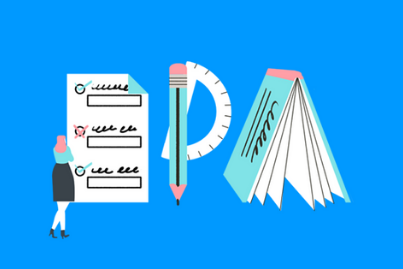End-point assessment: frequently asked questions

End-point assessments (EPAs) test the knowledge, skills and behaviours (KSBs) that an apprentice has gained during their training.
At the end of an EPA your apprentices will be graded, and with these results impacting their future careers, it’s important you get it right every step of the way.
That’s why OneFile has gathered answers to the 10 most frequently asked questions about end-point assessment.
1. What is end-point assessment?
Once apprentices have finished their on-programme learning, they must complete an EPA.
EPAs are independent assessments designed to test whether learners have gained the knowledge, skills and behaviours (KSBs) set out in the relevant apprenticeship standard. The aim is to objectively demonstrate the competence of an apprentice in their role.
2. What assessment methods are used?
Details of EPAs vary depending on the course, and are outlined in the assessment plan for each standard. The assessment plan must explain what's being assessed and what assessment methods should be used – such as tests, examinations, professional discussions, workplace observations, assignments or a portfolio of work.
3. What is the apprenticeship gateway?
Once an apprentice has completed their on-programme learning they must agree, in conjunction with their employer and/or training provider, that they’re ready to take the EPA.
From that point, a clock starts ticking until the apprentice has to complete their EPA. This period of time is called the gateway. Depending on the assessment methods and availability of your end-point assessment organisation (EPAO) , the gateway can be between a week or even a few months long – so it needs to be carefully planned for.
It’s a good idea to view the gateway as an opportunity for apprentices to reflect on their learning, practice assessment methods and compile their portfolios.
4. How much does the EPA cost?
The cost will vary slightly depending on the assessment methods, but the EPA usually makes up between 10-20% of the overall cost of the apprenticeship.
Employers who don’t pay a levy contribute one third of the EPA costs, and the ESFA pays the remaining two thirds. Employers who pay the levy use their contributions to pay for the EPA.
5. Can a training provider use their own assessors to carry out the EPA?
No. The EPA must be carried out by an independent end-point assessor to make sure that grading decisions are fair and consistent.
6. How are end-point assessments quality assured?
The system is designed to deliver consistent quality. Each apprenticeship standard has a dedicated external quality assurer (EQA) which monitors the quality and consistency of each end-point assessment organisation (EPAO) delivering EPAs for that standard. In addition, each EPAO has its own internal quality assurance (IQA) to make sure the assessments they deliver are standardised and marked properly.
7. What is the minimum time on programme before an apprentice can take the EPA?
All apprentices must complete a minimum of 12 months’ on-programme learning before taking the EPA, unless it says otherwise in the apprenticeship standard. This is different from the old frameworks where apprentices could complete their course much earlier.
8. How are apprentices graded?
Apprentices will achieve a pass, merit or distinction – which is a great way to motivate learners to take their development to the next level.
9. When do apprentices find out if they've passed their EPA?
Exact timings vary, depending on the EPAO, but when the end-point assessment has been marked and moderated, the results will be sent to the training provider. The training provider will then need to share the results with the apprentice and their employer.
10. What happens if the apprentice fails the EPA?
If an apprentice fails the EPA, employers will have to foot the bill for retakes. A costly situation, which is best avoided with thorough preparation well ahead of time. That’s why we've created a handy checklist to help you plan for a successful gateway and prepare your apprentices for EPA.
This article includes research and opinion sourced by OneFile at the time of publication. Things may have changed since then,
so this research is to be used at the reader's discretion. OneFile is not liable for any action taken based on this research.


